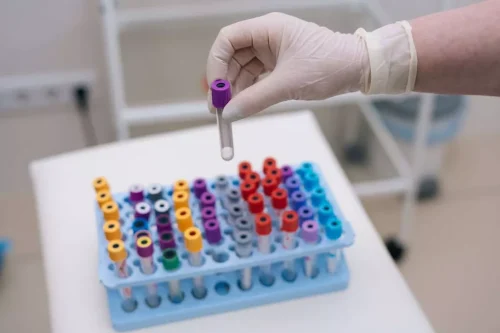
The ‘Quebec beer drinkers’ cardiomyopathy’ was related to cobalt supplementation to beer that was made in the past. It was described as a form of DCM with severe pericardial effusion, low cardiac output, and purplish skin coloration. As pointed out before, the current accepted definition of ACM probably underestimates the number of women affected by the disease.

Acknowledgments

However, a possible confusion factor was identified because the group with clinical improvement also exhibited a shorter evolution of the symptoms and the disease. Finally, it should be noted that a large majority of studies on the long-term prognosis of ACM used the cut-off point of 80 g/d for a minimum of 5 years to consider alcohol as the cause of DCM. Since those initial descriptions, reports on several isolated cases or in small series of patients with HF due to DCM and high alcohol intake have been published15-17. Some of these papers have also described the recovery of LVEF in many subjects after a period of alcohol withdrawal15-17. Another curious hypothesis from Germany suspected that some ethanol additives, such as anti-foam beer products with arsenic or cobalt content, produced cardiac toxicity and development of ACM 71. Therefore, alcoholic cardiomyopathy symptoms it is evident that ACM may develop with normal serum thiamine and electrolyte levels 38,66.
Enhancing Healthcare Team Outcomes
- Chronic alcohol consumption can cause multi-organ damage including myocardial dysfunction.
- Similarly, patients suffering from other ethanol-related diseases such as liver cirrhosis or brain atrophy should completely suppress their ethanol consumption 47,48.
This indicates that it is no longer a passing fad and the recent launch of Bero, a premium option created by CEO John Herman and actor Tom Holland, further underscores this consumer behavior shift. A tidal wave of companies, including those owned by celebrities, are trying to tap into the non-alcoholic beer market, which is gaining traction among a large swath of consumers. The authors are solely responsible for the study design, conduct and analyses, and drafting and editing of the manuscript and its final contents. We conducted our analysis on discharge data from the Healthcare Cost and Utilization Project‐Nationwide Inpatient Sample (HCUP‐NIS) from 2002 through 2014.
- In fact, patients with ACM who abstain from alcohol have a better long-term prognosis than subjects with idiopathic dilated CMP 54.
- Cardiac remodeling tries to compensate for this damage, establishing a balance between aggression and defense mechanisms.
- Inclusion criteria encompassed articles that focused on ACM or the relationship between alcohol abuse and cardiac dysfunction, involved human subjects or relevant animal models, were written in the English language, and were published within the last 10 years.
- Daily consumption of low to moderate amounts of alcohol has beneficial effects on cardiovascular health among both ischemic and non-ischemic patients1-3.
Conditions That Heavy Alcohol Use Can Lead To
Heart myocytes are relatively resistant to the toxic effect of ethanol, developing a functional and structural compensatory mechanism able to minimize or repair the ethanol-induced myocyte damage 20,31,39. Structurally, hypertrophy of myocytes is seen in the early stages to avoid contractile depression 52,107,125. The heart output is progressively lower in a dose-dependent relationship with the lifetime accumulated total dose of alcohol consumed 38. Several growth factors and cardiomyokines exert an autocrine or paracrine effect that tries to compensate for this heart damage 119,133. Antioxidant, anti-inflammatory, anti-apoptotic, and antifibrogenic mechanisms try to avoid myocyte necrosis and heart fibrosis 14,30,58. The final result is that achieved from the equilibrium between the degree of damage and the capacity of heart repair mechanisms in each specific individual 31,56.

Alcoholic Cardiomyopathy and Your Health
At present ACM is considered a specific disease both by the European Society of Cardiology (ESC) and by the American Heart Association (AHA)18,19. In the ESC consensus document on the classification of cardiomyopathies, ACM is classified among the acquired forms of DCM19. Alcoholic cardiomyopathy is a leading cause of non-ischemic dilated cardiomyopathy in United States. The NIAAA provides an Alcohol Treatment Navigator, where people can learn about AUD treatments and access care and support networks locally. According to the NIAAA, many people with AUD recover, although setbacks are common among those receiving treatment.

